This time of year we enjoy many of our evening meals outside just because we want to take full advantage of long days, and warm nights while we can. That means we do a lot of outdoor grilling. It really is my favorite form of summertime entertaining. There’s nothing more relaxing in my book, and I want to take full advantage of these long summer days before they are over all too quickly!
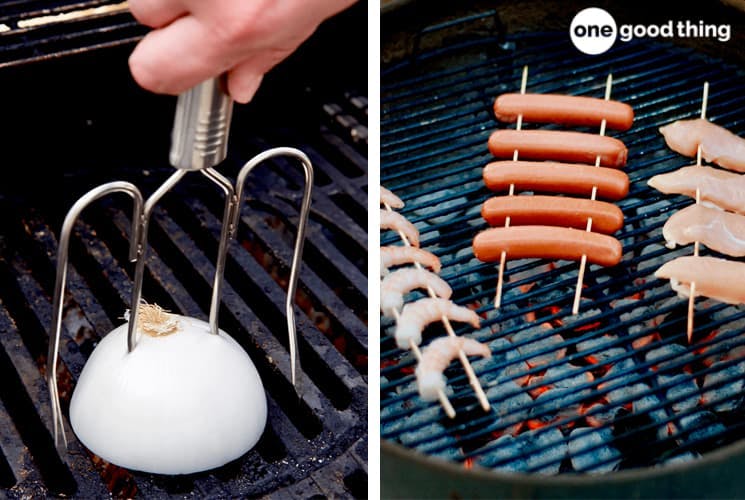
Warm it up.
Take meat out of the fridge and let it sit out at room temperature for 20-30 minutes. The key to a perfect steak is cooking it at a high temperature for a short amount of time. The colder the steak is when it hits the grill, the longer it will take to cook it. And the more time it spends over the heat, the tougher it gets. Ideally, you want the interior of the meat to be a bit cool when it hits the grill. This helps you to achieve the perfect medium rare steak.
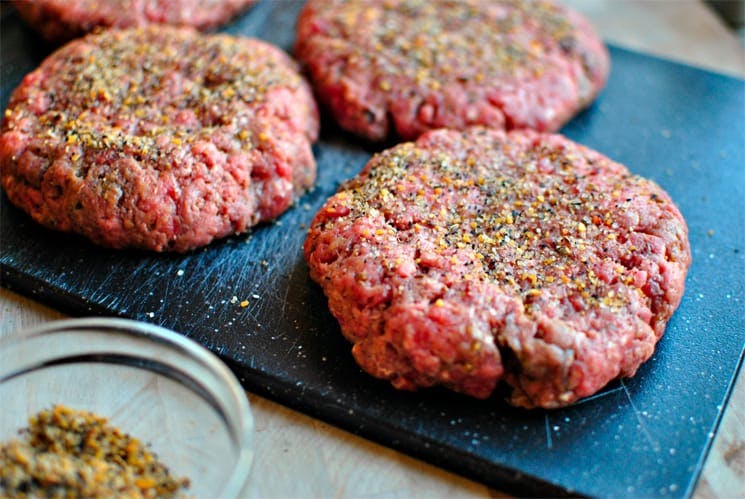
Season meat liberally.
Big, thick steaks need a lot of seasoning, so be sure to cover them liberally with salt, pepper and any rub before grilling. A good rule of thumb for home cooks is to salt the meat twice as much as you think is needed.

Clean your grill grate.
A clean grill will allow for non-stick grilling. Invest in a good grill brush and at the beginning of each cooking session, after you’ve preheated your grill, give it a good scrub down with the brush to remove any remains from the previous session. After scrubbing the grate, dip a wadded paper towel in a little oil and, using tongs, wipe the oil evenly over the grate.
Give your grill plenty of time to preheat.
To gauge the heat of a fire, hold your hand about four inches above the grill grate and start counting: “One Mississippi, two Mississippi.” Over a hot fire, you’ll get to two or three Mississippi before you’re forced to move your hand; over a medium-high fire, four to five Mississippi; over a medium-low fire, eight to ten Mississippi. It helps kill bacteria!

Create heat zones.
On a kettle grill, bank coals in the center. Sear food in the middle, where heat is highest, then move it to the outer edges of the grill to perfectly cook without burning. On a gas grill, leave one burner on high, another on medium.
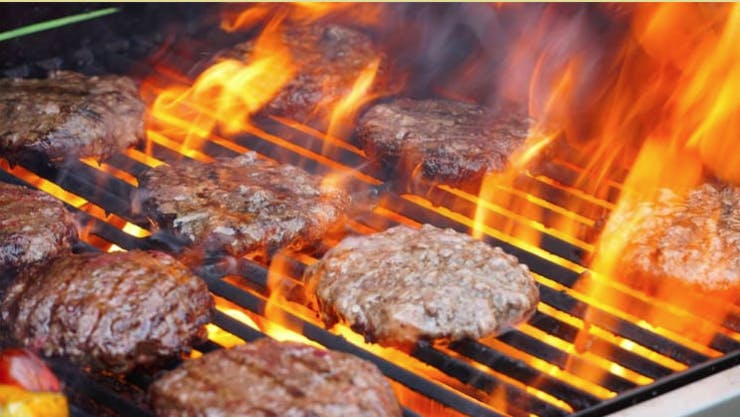
Avoiding grill flare-ups.
Flare-ups are an inevitable part of grilling. When they occur:
- Move the food from the hot zone to the medium zone until the flames subside.
- You can also try putting down the lid. (If you’re working on a charcoal grill, close the top and bottom vents.) This deprives the fire of oxygen, which eventually extinguishes the flames.
- A few squirts of water from a spray bottle can also dampen a flame. But use the technique sparingly. The water may stir up loose ashes or even spread the fire.
- As a last resort, sprinkle salt or baking soda over the fire to extinguish it.
Don’t move & don’t poke.
Let your steak develop a seared crust on the grill before moving or flipping it. If you try to lift the meat before it’s ready, it’ll stick to the grates.
When checking for doneness, resist the urge to repeatedly poke, stab, or pierce your meat with a fork or prongs. The juices will escape, making the meat drier and less flavourful. Use a spatula or tongs to move and flip your food.
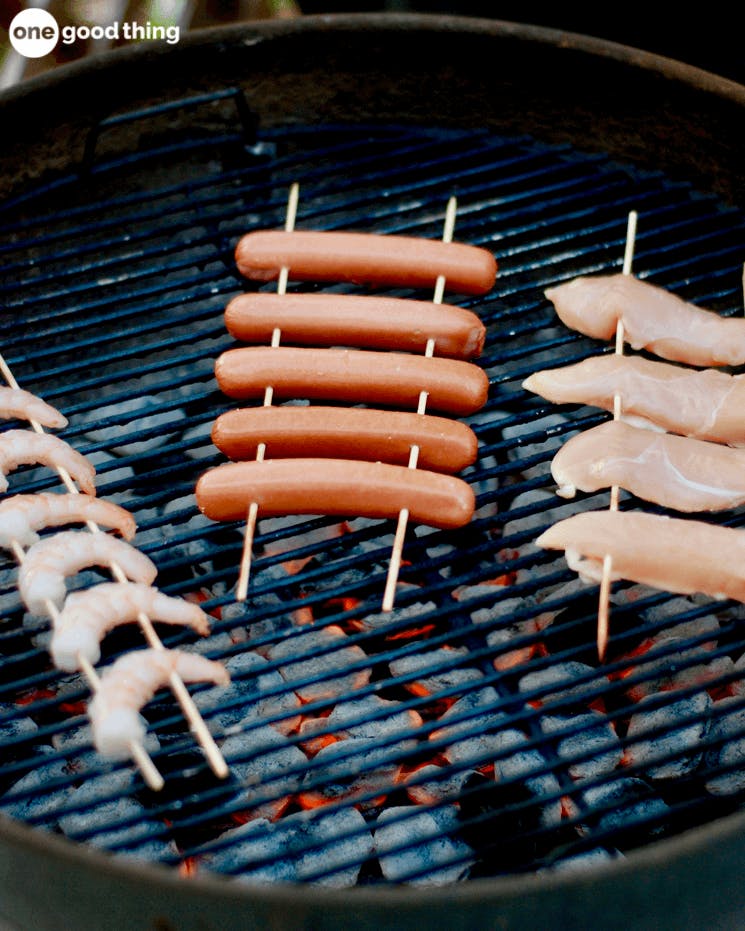
Skewer it!
If you’re running short on time, instead of grilling large pieces of meat, cut meat into pieces and make kebabs. No need to soak the skewers first. Cook’s Illustrated claims soaking is unnecessary. I personally don’t soak. It seems, no matter how long I soak them they always burn a bit anyway. I’ve never had any actually catch on fire.
- Use two skewers and thread the food onto both so that it lies flat. Especially good trick for shrimp, chicken and other meats that tend to curl as you cook them.
- Don’t crowd the skewers. Leave a little space between each piece of food. This allows for hot air to circulate and promotes even grilling
- Cook meat and vegetables on separate kabobs. If you mix them together on a single skewer, the vegetables will be burned by the time the meat is done.
- Try “edible skewers” – skewer meat or seafood on sprigs of fresh rosemary (great for lamb), cinnamon sticks (great for pork and peaches), or lemongrass stalks (great for chicken, shrimp, and swordfish).
Don’t sauce too soon.
Be careful not to sauce food too early, especially if you are using a sweet sauce, as the sugars will burn. Wait until the last few minutes of grilling if using a sauce that contains sugar.
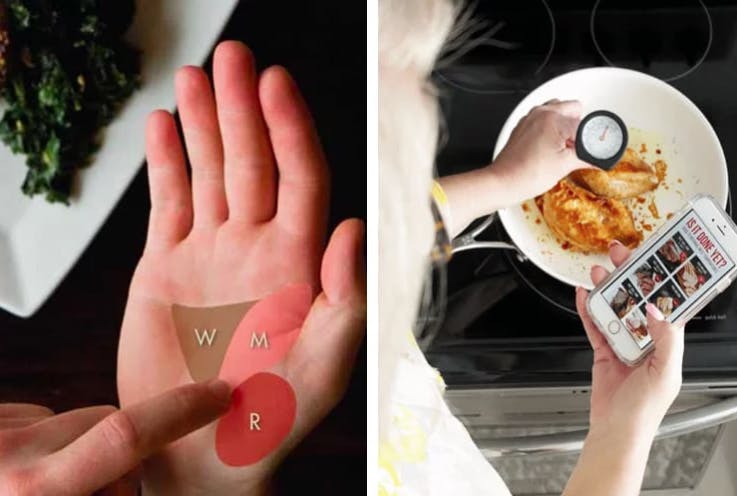
Timing is crucial.
Food continues to cook after it comes off the grill, so it’s best to remove it just before it has reached the desired doneness.
Here are two ways to test for doneness:
Your hand.
Test the doneness of your meat by pressing down on the surface of your steak with a (clean!) finger. Now, hold one hand relaxed, and likewise push down on it with a finger from your other hand.
DOES YOUR STEAK FEEL:
• Like the meat of your thumb? (where your thumb meets the rest of your hand) Then it’s currently Rare.
• Like the area between your thumb and your palm? Then it’s currently Medium.
• Like the middle of your palm? Then it’s currently Well Done.
A Thermometer
I personally don’t trust myself with the touch test so I always use a thermometer. A thermometer is the only way to guarantee that your meat has been cooked to the correct internal temperature and it makes it really easy to get consistently great results from your grilling efforts.
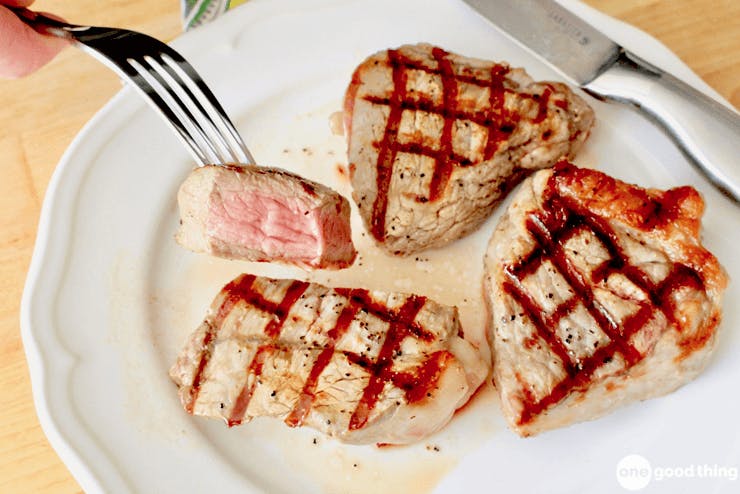
Let it rest.
Once your meat is off the grill, wait at least 5 minutes before slicing. This gives the juices a chance to settle back into the meat. But don’t place them directly onto a plate or tray. To preserve the crispy grill marks you worked so hard to achieve, place the meat on a cooling rack. This allows enough air to circulate underneath that it doesn’t have to rest quite as long. Works perfectly every time!
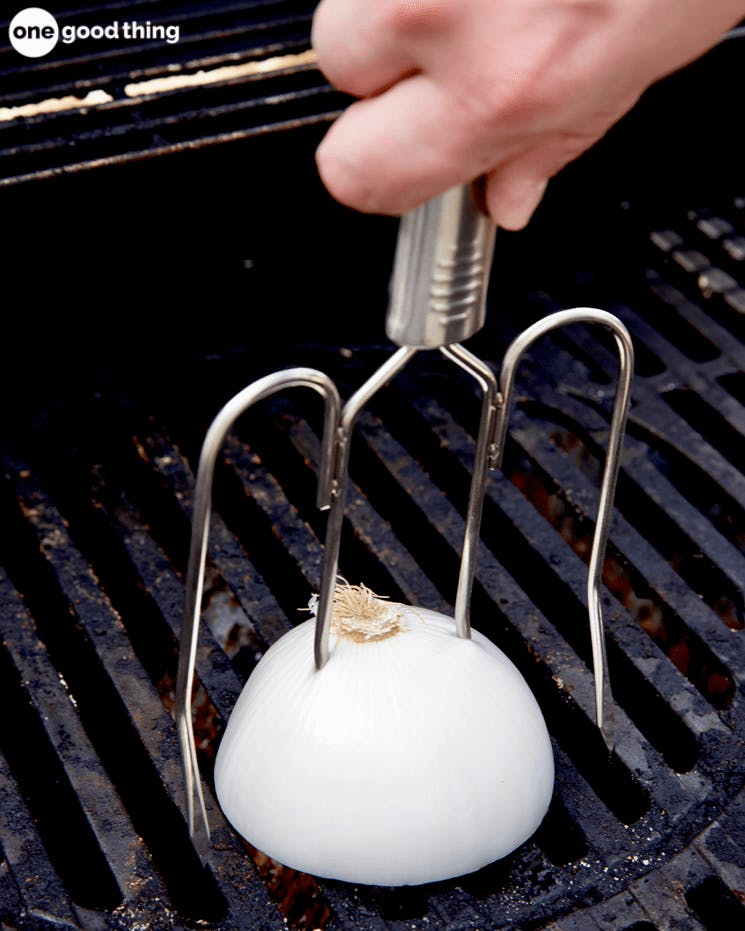
Clean grill grate….AGAIN.
Clean the grill while it’s still hot to easily remove burned bits of food stuck to the grate. I like to cut an onion in half and scrub the grill with it. It leaves a nice residue that adds flavor and prevents food from sticking. Periodically clean the drip pan of a gas grill so accumulated fats don’t ignite. Sprinkle crushed red pepper in the bottom of the grill. They’ll keep pests away when you’re not using it.
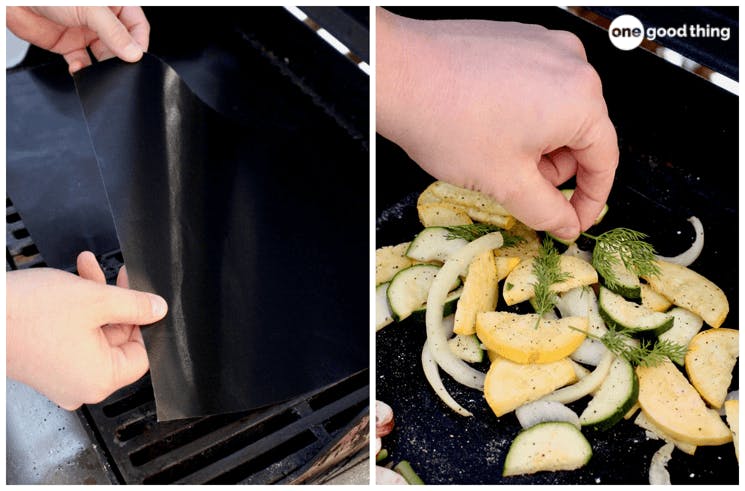
KEEP it clean.
You can keep the mess to a minimum by using a grill and oven mat like this one. You can place them in the bottom of a gas grill to catch drips, or use them right on top of your grill grates on any type of grill. Just toss the mat in the dishwasher to clean it.

